Shaun Lewis's Blog, page 2
September 17, 2019
How to kill a WW1 submarine
Several readers of my WW1 submarine thriller, The Custom of the Trade, have expressed surprise at how difficult it was to detect and sink submarines during the first half of the war. We have been brought up with images from WW2 submarine films of destroyers locking on to the dived submarine and attacking it with depth charges. It comes as a surprise that neither sonar nor depth charges had been invented before 1916.Prior to 1916, the only means of detecting submarines was visually. Aircraft and airships were the best observation platforms, not only because their height offered visibility at greater ranges, but in clear waters, such as the Mediterranean and Baltic, even dived submarines could be spotted at shallow depths. Early in the war, the Allies set about inventing a means to detect submarines by listening. The work began to come to fruition in 1916. Initially, the hydrophones were lowered into the water, much as practised today by helicopters with dipping sonar. The first success was achieved in April 1916 when UC3 was detected by hydrophone and sunk. The Germans quickly became aware of the new devices and began to develop their own versions later in the year. By mid-1917, the Royal Navy had gone on to test and perfect ASDIC, an active sonar capable not just of detecting submarines by active transmissions, but judging its range and speed by the returning echoes.The best methods for defending harbours and anchorages from submarine attack were nets at mines. Several submarines from all nations were lost to mines throughout the war. In 1915, the Turks and Germans managed to lower mines down to set depths to explode alongside the hulls of submarines stuck in their anti-submarine nets. Otherwise, once submarines were detected, the preferred offensive methods of attack were shellfire or ramming. Obviously, these were ineffective against dived submarines. Other submarines could fire a torpedo at an enemy submarine at periscope depth and attempts were made by aircraft and airships to bomb submarines on the surface or in the process of diving. Even before the war, the Royal Navy had begun work on a weapon that could be used against submarines at depth, but it was not until January 1916 that an effective device, that we now know as the depth charge, was deployed in RN ships. In March 1916, a German U-boat was sunk by depth charges dropped from a Q-ship. The Germans were again not slow to catch up with the new technology, but did not employ depth charges in numbers before 1917.It must not be overlooked that in the same way as ships were not able to detect the noise of dived submarines until 1916, submarines were almost as deaf. A ship’s engine and propeller noises could be heard through the hull of a submarine, but the only means of identifying the target’s speed, course and range was visually. Raising a periscope risked counter-detection. Towards the end of the war, submarines were fitted with hydrophones that could be lowered through the hull, but it was not until the early 1920s that trials were conducted into the use of ASDIC or active sonar in submarines. Only then could the concept of blind attacks, ie by sound only, be developed.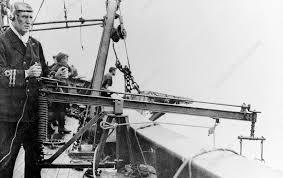

Published on September 17, 2019 04:33
August 19, 2019
WHY DO FILM MAKERS DISTORT HISTORY SO BADLY?
This weekend, I watched a dreadful submarine film, K-19: The Widowmaker’. It had an all-star cast, including Joss Ackland, Harrison Ford and Liam Neeson, but it annoyed me for its historical and technical inaccuracies. As ever, the writer of the screenplay distorted the science of nuclear physics to suggest that a reactor meltdown could somehow become a bomb capable of starting WW3 by accident. It is such a popular myth I suppose it can be forgiven. However, the true story of the nuclear accident at sea was surely fascinating enough without all the remaining distortions.It led me to wonder why film makers feel the need to change true stories so much. In the film Braveheart, William Wallace has an affair with Queen Isabella of France, even though she was actually 3 years old at the time and living in France. Perhaps the blame for the portrayal of the Highlanders in belted plaid and kilts 500 years before their time cannot necessarily be placed at the feet of the writer, though. Why did James Cameron include in his film Titanic, the scene where First Officer Murdoch panics and shoots passengers before committing suicide, despite there being no evidence of the deeds and it upsetting his living relatives? I suppose writers of screenplays have two thoughts; the true history is not dramatic enough and needs to be embellished; and the audience will be too ignorant to notice the inaccuracies.All my novels are based on true stories that I deem worthy of bringing to the attention of today’s readers. I confess to making up dialogue for real characters, combining events into one timeframe or shifting the dates of the action to suit the structure of my story, but I do take great care to research my stories accurately and try to avoid distorting the facts. Where I have played a little with history, I do confess to it in my author’s notes to avoid misleading the reader. After all, my aim is not just to entertain my readers, but to leave them a little more knowledgeable about historical events and even to inspire them to study more of the events afterwards. Perhaps, after I have finished my current work, I should consider writing a screenplay.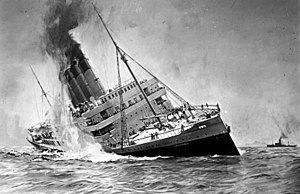

Published on August 19, 2019 04:23
August 6, 2019
HOW TURKEY MIGHT NOT HAVE JOINED GERMANY IN WW1
It is a well-known fact that on 4th August 1914, Great Britain declared war on Germany. However, it is less well-known that events taking place earlier that day might have prevented Turkey from joining the war on the side of the Germans. But for a failure by the Royal Navy, there might not have been a need for the Gallipoli campaign and Churchill might have remained as First Lord of the Admiralty. The Ottoman Empire might not have been carved up and such countries as Syria, Iraq, Saudi Arabia and Lebanon would not have been formed. Nor would I have had the background story for my novel, The Custom of the Trade, on the submarine campaign in the Dardanelles!Immediately prior to the outbreak of war, Churchill ordered the seizure of two Dreadnought-class battleships being built on Tyneside for the Turkish Navy. The two ships were renamed HMS Agincourt and HMS Erin. Payment for the two ships had been made by the Ottoman Empire and the cancellation of the sale caused resentment amongst the Turkish population at large and the pro-British members of the Cabinet. Secretly, however, the Turks had already unsuccessfully sought an anti-Russian alliance with Germany and offered to sell the ships to the Germans, unaware that Britain might enter the brewing European war. Germany responded by offering the Ottomans the battlecruiser Goeben and cruiser Breslau as replacements for the two sequestered Dreadnoughts.On 3rd August, Goeben, under the command of Admiral Souchon, and Breslau shelled ports in French Algeria. France and Germany were at war, but Britain was still neutral. Souchon then received orders to proceed to Constantinople and the following morning came into contact with two Royal Navy battlecruisers under the command of Admiral Milne, the Commander-in-Chief Mediterranean Fleet. Churchill feared an attack on the French fleet and ordered Milne to attack the German ships in such an eventuality, but the Cabinet overruled any offensive action prior to the expiration of the ultimatum that evening. Henceforth began a cat and mouse game as the Royal Navy attempted to maintain contact with Souchon’s ships whilst he pulled out the stops to evade his shadows. His men and machinery were worked beyond their normal limits such that four stokers were killed by scalding steam and several more fainted through the heat and exertion. As darkness fell, in the days before radar and satellite surveillance, the Royal Navy lost contact with the Germans off Sicily.Even so, on 6th August, Souchon’s ships were detected by a squadron of cruisers and destroyers of the Mediterranean Fleet under the command of Admiral Troubridge. Even though Britain and Germany were now at war, Troubridge broke off contact on the grounds that he was under orders not to engage a superior force (his cruisers were slower, carried lighter armour and were armed with smaller guns than the Goeben even though his force was numerically larger). Troubridge was later court martialled and acquitted for this decision, but never again offered sea command.I describe the thrilling pursuit in my next novel, On the Wings of the Wind, but as this is not published until January 2020, a better and more detailed account can be obtained in Barbara Tuchman’s, The Guns of August. Suffice to say, the Germans entered Constantinople safely. Two months later, the presence of these two powerful ships with German crews was instrumental in persuading Turkey to join the war on the side of the Germans.Despite Turkey’s presence in the war, the Gallipoli campaign might still have been avoided had the Admiralty’s Director of Naval Intelligence, Captain ‘Blinker’ Hall, succeeded in his plan to bribe Turkish ministers with up to £4M to break off the alliance with Germany. Again, I refer to this in my upcoming novel, but more information can be obtained in my blog of 30 April 2019.

Published on August 06, 2019 09:04
July 13, 2019
Hydrogen gas and submarines. Danger!
In my submarine thriller, The Custom of the Trade, I describe an accident in an early submarine caused by hydrogen gas. Even today, hydrogen gas can be a killer in submarines. It has been reported that the recent accident in the Russian nuclear submarine, Losharik, was caused by a hydrogen gas explosion. Before the advent of nuclear propulsion, submarines were entirely reliant on battery power when dived. Today, batteries are a back-up in the event of having to shut down the reactor. The trouble with batteries is that they give off hydrogen gas. Even in the days when it was not possible to provide ventilation for the submarine crews, submariners were careful to provide fans over the battery cells to ventilate the lethal gas, as it is highly combustible and a fire in a dived submarine is bad news, indeed. Hydrogen is not the only lethal by-product of submarine batteries, however. A bigger problem for the submarine crews of conventional submarines (ie non-nuclear powered), is that when a battery cell is exposed to seawater, it gives off chlorine gas, the same poison gas used in WW1. On the surface, it is common practice to run with a hatch open in order to feed fresh air to the diesel engines. In rough weather, it is not unusual for the interior of the submarine to be swamped by large waves and when the seawater drains through the deck below, it finds the battery cells.The Losharik tragedy this year and the loss of the Argentinian submarine ARA San Juan 18 months ago, are reminders of the dangers submariners of all nations have always faced and continue to fear.
Before the advent of nuclear propulsion, submarines were entirely reliant on battery power when dived. Today, batteries are a back-up in the event of having to shut down the reactor. The trouble with batteries is that they give off hydrogen gas. Even in the days when it was not possible to provide ventilation for the submarine crews, submariners were careful to provide fans over the battery cells to ventilate the lethal gas, as it is highly combustible and a fire in a dived submarine is bad news, indeed. Hydrogen is not the only lethal by-product of submarine batteries, however. A bigger problem for the submarine crews of conventional submarines (ie non-nuclear powered), is that when a battery cell is exposed to seawater, it gives off chlorine gas, the same poison gas used in WW1. On the surface, it is common practice to run with a hatch open in order to feed fresh air to the diesel engines. In rough weather, it is not unusual for the interior of the submarine to be swamped by large waves and when the seawater drains through the deck below, it finds the battery cells.The Losharik tragedy this year and the loss of the Argentinian submarine ARA San Juan 18 months ago, are reminders of the dangers submariners of all nations have always faced and continue to fear.
 Before the advent of nuclear propulsion, submarines were entirely reliant on battery power when dived. Today, batteries are a back-up in the event of having to shut down the reactor. The trouble with batteries is that they give off hydrogen gas. Even in the days when it was not possible to provide ventilation for the submarine crews, submariners were careful to provide fans over the battery cells to ventilate the lethal gas, as it is highly combustible and a fire in a dived submarine is bad news, indeed. Hydrogen is not the only lethal by-product of submarine batteries, however. A bigger problem for the submarine crews of conventional submarines (ie non-nuclear powered), is that when a battery cell is exposed to seawater, it gives off chlorine gas, the same poison gas used in WW1. On the surface, it is common practice to run with a hatch open in order to feed fresh air to the diesel engines. In rough weather, it is not unusual for the interior of the submarine to be swamped by large waves and when the seawater drains through the deck below, it finds the battery cells.The Losharik tragedy this year and the loss of the Argentinian submarine ARA San Juan 18 months ago, are reminders of the dangers submariners of all nations have always faced and continue to fear.
Before the advent of nuclear propulsion, submarines were entirely reliant on battery power when dived. Today, batteries are a back-up in the event of having to shut down the reactor. The trouble with batteries is that they give off hydrogen gas. Even in the days when it was not possible to provide ventilation for the submarine crews, submariners were careful to provide fans over the battery cells to ventilate the lethal gas, as it is highly combustible and a fire in a dived submarine is bad news, indeed. Hydrogen is not the only lethal by-product of submarine batteries, however. A bigger problem for the submarine crews of conventional submarines (ie non-nuclear powered), is that when a battery cell is exposed to seawater, it gives off chlorine gas, the same poison gas used in WW1. On the surface, it is common practice to run with a hatch open in order to feed fresh air to the diesel engines. In rough weather, it is not unusual for the interior of the submarine to be swamped by large waves and when the seawater drains through the deck below, it finds the battery cells.The Losharik tragedy this year and the loss of the Argentinian submarine ARA San Juan 18 months ago, are reminders of the dangers submariners of all nations have always faced and continue to fear.
Published on July 13, 2019 09:27
June 24, 2019
The submarine with two VCs
The forgotten, but outstandingly successful submarine campaign in the Dardanelles and Sea of Marmara, deprived the Turks of vital supplies at Gallipoli, such that when the Allies withdrew from the beaches, the Turks were within a week of running out of ammunition. Four Commanding Officers of Royal Navy submarines were awarded the VC in the campaign.The hero of my first novel, The Custom of the Trade, is loosely based on Lieutenant Commander Martin Nasmith’s exploits. He was awarded the VC whilst in command of HMS E11. However, HMS E14, in the same theatre, was to achieve even greater recognition. Two of her COs were to win the VC and she remains the only Royal Navy vessel to this day to have this signal honour. In May 1915, under the command of Lieutenant Commander Edward Courtney Boyle, she sank the Turkish transport ship, Gul Djemal. At the time, she was thought to be carrying 6,000 troops and several guns. Under a recently re-enacted Prize Law, submariners were eligible for £5 head money for sinking such ships and the 31 members of the crew were expecting a pay out of £30,000 (worth £2.9M today), but needless to say, the Admiralty Prize Court obfuscated and finally made a reduced payment in 1920. Boyle was awarded the VC for his actions.He was subsequently relieved by Geoffrey Saxton White. In January 1918, White was despatched to hunt for the Goeben, a German battlecruiser operating under Turkish colours. He failed to find her, but on his return, came under heavy fire from the Turkish forts before he could dive E14. Due to the damage sustained, he was forced to return to the surface where the boat again came under heavy shell fire. White remained on the bridge throughout and eventually made the decision to run the submarine aground to save his crew. He was then killed by a Turkish shell and awarded the VC posthumously.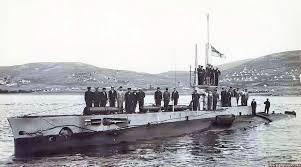

Published on June 24, 2019 04:47
June 23, 2019
THE ADMIRALTY BUYS A PERSIAN OIL FIELD
In June 1913, Winston Churchill as First Lord of the Admiralty, persuaded the House of Commons that the Treasury should spend £2.2 million on a 51% stake in Persian oil fields in order to guarantee the supply of fuel oil to the Royal Navy. The House approved the bill within a day, the investment was duly made and a twenty-year contract negotiated. I suspect today’s Sea Lords are jealous of the influence their predecessors once held.In my second novel, Now the Darkness Gathers, I suggest that Germany would have wished to interfere with the negotiations, but in fact I have found no evidence to suggest this was true. Accordingly, although there is a naval saying that one should not spoil a good story with the truth, my plot contains a twist.The Navy had decided to begin the change from steam to oil as it offered its battlecruisers an increased speed. Moreover, oil was easier to store than coal and could be replenished at sea. With this in mind, as early as 1905, the Admiralty concluded a contract for the supply of oil from Burmah Oil’s Rangoon refinery. When it heard that an Englishman, William Knox D’Arcy, had acquired a sixty year concession to drill for oil over 500,000 square miles in Persia, but was short of funds to develop the oil fields, the Admiralty, fearing the concession might fall into foreign hands, persuaded Burmah (the Victorian spelling of today’s Myanmar) to invest in Persia and establish the Anglo-Persian Company (APOC). However, the oil proved costly to refine and transport and by 1912, Burmah was unwilling to finance the venture further. This led to the Admiralty intervention to acquire the majority shareholding in APOC. APOC became British Petroleum in 1954.

Published on June 23, 2019 03:49
May 31, 2019
The Anniversary of the Battle of Jutland
Today, on 31st May in 1916, 250 British and German ships met in what became known in the Battle of Jutland. The battle was to last until the following day and both sides suffered nearly 10,000 casualties. Fourteen Royal Navy ships and eleven German ships were sunk. Most of the casualties were on the British side. Over 6,000 Royal Navy sailors died. The German ships were not only better armoured, but built with more watertight compartments. Whereas the RN ships were designed to circle the world, the Germans only designed their ships to fight in the North Sea and so crew comfort was not a priority. Overall, the Imperial German Navy came off better in the battle, but the RN gained a strategic victory in that the High Seas Fleet was largely confined to port for the rest of the war.Admiral Jellicoe was the Commander-in-Chief of the Grand Fleet during the Battle of Jutland. He was a cautious man and has been criticised for failing to achieve a decisive victory at Jutland. However, with limited intelligence of the German Fleet’s movements, he probably handled the Grand Fleet as well as anybody could have expected. As Churchill said, he was “the only man on either side who could lose the war in an afternoon”.Following the battle, Jellicoe was promoted to the appointment of First Sea Lord and replaced as Commander-in-Chief by Beatty. It was not to be a successful office for Jellicoe. Unfortunately, Jellicoe was a pessimist and some would say a defeatist. As the First Sea Lord he briefed the new Prime Minister, Lloyd George, nothing could be done to counter the U-boat threat and initially imposed the introduction of the convoy system. Lloyd George soon reached the conclusion that Jellicoe would have to go, but it took several more months before Jellicoe was sacked at the end of 1916. Nonetheless, he was promoted to Admiral of the Fleet in 1919 and appointed as Governor General of New Zealand in 1920. He was elevated to the peerage on his return to Britain in 1925 and died ten years later.Despite Jellicoe’s reputation for caution in high command, few people today recognise his heroism in the late 1800s. He commanded a rifle company of the Naval Brigade during the Egyptian War of 1892 and served with distinction in China during the Boxer Rebellion. At the Battle of Beicang, in 1900, he personally led the Naval Brigade in an assault on the Boxers’ heavily defended position and was shot in the chest, his wounds so bad that he was not expected to live. His actions were later rewarded with the CB and a German decoration for gallantry. Despite his failure as First Sea Lord, he was highly regarded by his fellow admirals for his sense of duty, courage and dignity.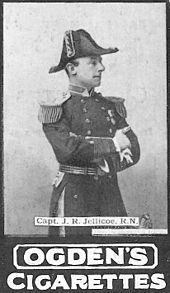

Published on May 31, 2019 02:54
May 27, 2019
The use of secret inks for espionage
In my second novel, on WW1 naval intelligence, I made reference to the secret or invisible inks used by intelligence agents during and leading up to WW1. The use of invisible inks can be traced back as long ago as the 4th Century BC and was still occasionally used by British SOE agents during WW2. George Washington is reported to have used a secret ink during the American War of Independence. There is evidence of their use by spies during the Cold War and, as you will read later, they are still in use today by businesses and government agencies on public documents.Early invisible inks tended to be made from natural products, readily available. The idea was that the ink would be colourless and invisible until heated or treated with another agent, such as a chemical, to reveal the original message. Milk or plant products were deemed ideal and often lemon juice was used. WW1 intelligence agents were usually supplied with a specially designed invisible ink by their handlers. The preference was to provide the ink in the form of an innocent object that would not attract suspicion during a search. British agents tended to hide their ink powder in a shaving stick. The writing was then read by exposing the paper to an iodine vapour. However, all agents had to be prepared to use any substance readily available. It is said that during WW1, some British agents even had to resort to human semen at times! The practise was ceased after complaints about the smell. During WW2, German agents even used substances that had to be mixed with their own blood to produce the ink.At the start of WW1, German agents were using lemon juice as an invisible ink, but this was quickly discovered by the Secret Service Bureau. The Germans then came up with Argyrol, a light brown powder comprising a silver salt of protein soluble in water and used as a medicine or antiseptic. It was used to combat gonorrhoea! The German spymasters smeared a paste of it over a pair of the agent’s socks and the agent would produce the ink by rinsing out the socks in water. Indeed, agents from all countries often used impregnated clothing as a source of invisible ink right through to the 1950s.Today, a variety of invisible inks are commonly in use for non-nefarious use. A common example is as a security marker to protect property in the event of burglary. The ink is only revealed under ultra-violet light. Certain official documents also contain messages only visible to aid processing of the document and in this way avoid cluttering the visible parts of the page to the person completing the document.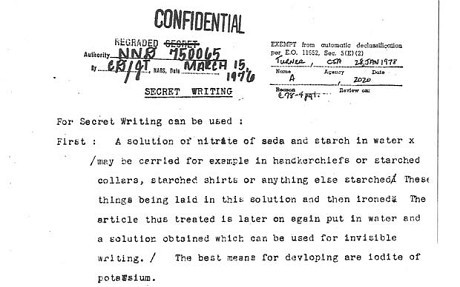

Published on May 27, 2019 05:03
May 20, 2019
The First Submarine Escape
I open my first novel, The Custom of the Trade, with a tragic submarine accident, in September 1911. The inspiration for my story came from a newspaper article of March 1911 reporting the sinking of the German submarine, U3. The submarine sank off Kiel harbour, fortunately in shallow water. The stern was completely submerged, but her bows pointed out of the water.Boats were quickly sent to the scene and the submarine crew released a telephone buoy to communicate news of their plight. The stern section of the boat was completely flooded, but 28 men had reached the safety of the torpedo compartment, shutting the watertight doors behind them. That left the two officers and one sailor trapped in the conning tower. Cranes were used to lift the bow section of the submarine to expose the torpedo tubes. Three rescuers then entered the submarine and fitted ropes to the men so that they could be dragged to safety. The survivors had been incarcerated for between eight and nine hours and were in very poor health, but had managed to stay alive through the assistance of their ‘oxygen making equipment’, probably an early form of oxygen candle.The Germans then discovered that their floating cranes were not powerful enough to lift the whole submarine out of the water to effect a rescue of the three men in the conning tower. Rather late in the day, they brought into action their submarine rescue ship, the Vulkan. This had two hulls with a pontoon deck between and cranes either side. The rescuers worked through the night and at 4am managed to lift the hull sufficiently to expose the top of the submarine’s fin. After cutting holes in its top to afford access, they finally reached the stricken officers and sailor. Tragically, they were too late.Unfortunately, the Royal Navy was slow to adopt submarine escape equipment, even though Sir Robert Davis, the head of Siebe Gorman and Company Ltd, invented an oxygen rebreather kit in 1910 for use in submarines. However, it was considered too bulky to allow an escaping submariner to exit the upper conning tower hatch and it was only in 1927 that the RN formally adopted the apparatus after some modifications. The apparatus was used with limited success for submarine escape in the 1930s.Instead, and again in 1910, the RN introduced the Hall-Rees breathing apparatus into submarines. The joint inventors were the then Inspecting Captain of Submarines, Captain Hall, and Surgeon Commander Rees. Unfortunately, many submarine captains deemed that the escape apparatus took up too much space in the already cramped confines of a submarine and landed the kits. I have come across no evidence that the apparatus was ever used successfully. 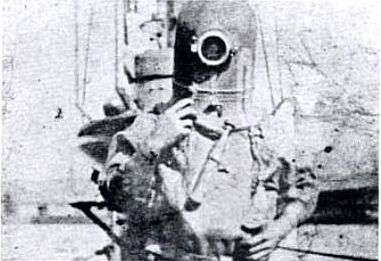

Published on May 20, 2019 08:34
May 10, 2019
50 years of continuous nuclear deterrent patrols
I have been reminded that today is the 51st anniversary of HM opening officially the Clyde Submarine Base at Faslane. Last week, the Royal Navy commemorated the 50th anniversary of the Continuous At Sea Deterrent. Both events cause me to reflect on my association with the naval base where I spend much of my naval career.Faslane lies at the head of the Gare Loch, a few miles from Helensburgh and 25 miles west of Glasgow. During WW2 it served as a base for submarines, but only in the 1960s did it achieve greater prominence when the government upgraded it to become the site of the Polaris submarine squadron and its base facilities. It was chosen as its geography offers seclusion, but deep and easily navigable waters for submarines to access the North Atlantic. Since then, it has undergone several other changes and is now the work place for 3,000 service and 4,000 personnel.I have served three full appointments and two temporary appointments based in Faslane, starting in the early 1980s. Unlike the remaining naval bases of Devonport and Portsmouth, Faslane is very modern and has no magnificent architecture. Security is very tight and one's naval identity card is in not sufficient to gain access. One has to have a specially coloured base pass and only very few are issued with the right coloured pass to access the green area where the nuclear missile carrying submarines are berthed. Armed Royal Marine and MOD Police sentries guard the external and internal access gates. The tight security, miles of razor wire, industrial buildings and, above all, the weather, give the base a forbidding air. Faslane is nicknamed 'Fasrain' by the sailors there. They say that if one can see across to the other side of the Gare Loch it is about to rain. If not, it is raining. The local naval welfare service has often had to deal with young wives, plucked from the bosoms of their families in the south, suffering from depression caused by the isolation, long dark evenings and poor weather. However, in good weather, the base's location is stunning. It lies at the foothills of the Highlands and on the finest coast for sailing in the UK. Property is relatively cheap up there and I chose to base my family there. My son was christened in the base on board my submarine and my daughter was born in Glasgow.I served at Faslane during the height of the Cold War and when CND was most active. There was a permanent peace camp outside the base and we often had to deal with intruders. I recall one senior officer had the bright idea that we should differentiate between intrusions by peace campers and those by potential Russian spetsnaz forces or terrorists by using a different alarm code word to avoid the Royal Marines automatically shooting to kill. He came up with the word, 'Vermin'. He was quickly pounced upon from on high and forced to change it to something less inflammatory. Public relations at the base is very sensitive at Faslane and was a major element of my responsibilities in my last appointment there. My boss was the local sea area commander and we frequently had to deal with issues concerning claims for damage to fishing nets (or worse) allegedly caused by dived submarines. However, most of our attention was directed to stories in the press about nuclear issues. Not only did we have submarines with nuclear reactors within the base, but we took over responsibility for the Armament Depot at nearby Coulport where our nuclear missiles were stored. The majority of media reports were complete tosh, but as we used to say, 'Why spoil a good story with the truth?' The sensitivity of the base was also a reason why we had to host hundreds of VIP visits a year, again for which I was responsible. In my time at Faslane, I met Margaret Thatcher, John Major, the Prince of Wales and every Defence Secretary of the era, as well as a host of senior officers from all three services and those of other countries.Towards the end of my career, it was decided to base a squadron of mine hunters at Faslane. We were already the base port for the Northern Ireland patrol vessels, but it was decided to change the name of the base from the Clyde Submarine Base to HM Naval Base Clyde. It was not a universally popular decision. In my early career, the base supported two submarine squadrons and I served with both. However, the squadrons were merged into one and from next year all the RN's submarines will be based at Faslane. In my last appointment, the decision was, also, made to close down the HQ of the Flag Officer responsible for Scotland and Northern Ireland and move it to Faslane. I was heavily involved in the move and integration of the new staff, a task that drove me to despair and to submit my resignation from the RN. Since then, the admiral's post has been combined with that of the Flag Officer Submarines. In my humble opinion, this seems sensible.The naval base has always been a political hot potato and will continue to be so whilst the SNP campaigns for independence from the rest of the UK. In my day, it was West Scotland's second biggest employer after tourism. I, also, saw the base move from West Dunbartonshire to Argyll and Bute. The former council and MP were keen to promote their region as being a nuclear free zone, but this was difficult to do with a nuclear missile base in its midst. Accordingly, when Argyll and Bute council offered to take the base and all the rates revenue it attracted, West Dunbartonshire agreed like a shot. The base is sure to continue to live through many interesting times in the future.Life at sea in Faslane based submarines and in the Naval Base Commander's inner office was tough. Even so, apart from my last year in the RN, I thoroughly enjoyed my appointments there and have fond memories of the place and life in Scotland. Both my children are proud to have been born in Scotland.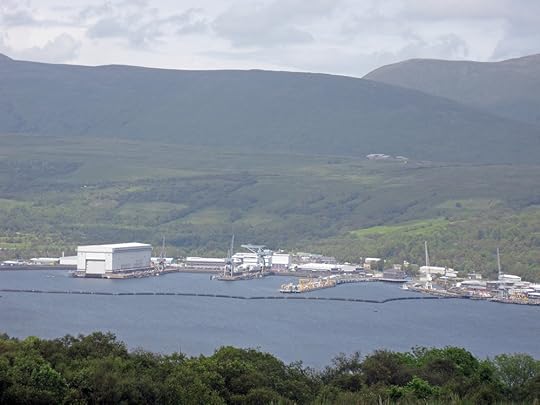

Published on May 10, 2019 04:30



